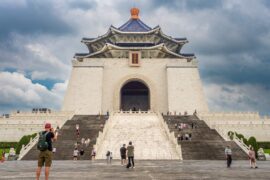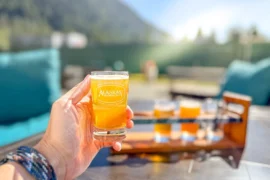Dallas doesn’t trumpet its cultural richness the way other Texas cities do, and that’s exactly what makes it special. While crowds flock to Austin’s food trucks or San Antonio’s River Walk, this city has been quietly nurturing one of America’s most authentic urban experiences—a place where Texas barbecue smoke drifts through neighborhoods thick with music history, where independent boutiques line century-old storefronts, and where the real story plays out far from the downtown skyscrapers.
I spent 72 hours exploring local neighborhoods, and what I discovered was a city that defies every cowboy-and-oil-baron stereotype you’ve ever heard.
Day One: Deep Ellum and the Music That Won’t Quit
I started at The Bomb Factory, a converted warehouse that hosts everything from indie bands to experimental electronic acts. On a Tuesday night, I watched a local band I’d never heard of play to maybe forty people. They were phenomenal. The bartender told me this happens constantly—world-class musicians in tiny rooms because they’d rather do that than compromise.
The area’s historic connection to Texas blues runs deep—Blind Lemon Jefferson once played these streets for spare change in the 1920s—but Deep Ellum today refuses nostalgia. Between shows, I grabbed barbecue at Pecan Lodge, where the brisket line stretches down the block for good reason. This is Texas-style barbecue done right: slow-smoked, tender, worth the wait.
At Sons of Hermann Hall, a century-old building that hosts swing dancing every weekend, I watched couples in their seventies glide across the wooden floor next to twenty-somethings who’d just discovered the scene. The band was tight, the dancing serious, the focus entirely inward.
Day Two: Oak Cliff’s Bishop Arts District
The Bishop Arts District in Oak Cliff is what happens when a neighborhood refuses to be bulldozed by progress. This North Oak Cliff quarter—built around a 1920s trolley stop—nearly disappeared in the 1960s but came roaring back in the 1990s when artists rediscovered the light-filled storefronts.
Today, over 60 independently owned shops, restaurants, and galleries pack Bishop Avenue. I spent the afternoon browsing boutiques like Indigo 1745 and quirky shops selling everything from vintage finds to handmade candles. What struck me most was the absence of chains—every single business here is locally owned, giving the area an authenticity that feels increasingly rare.
For lunch, I hit Eno’s Pizza for wood-fired perfection, then grabbed pie at Emporium Pies because you can’t visit Bishop Arts without trying their Cloud 9. Later, I wandered into the Mercado369 gallery, a community art space celebrating Latin American and Hispanic cultures—a reminder that Dallas’s diversity runs deeper than most visitors realize.
Day Three: South Dallas and the Gospel Tradition
Here’s something most guides miss entirely: South Dallas holds the key to understanding the city’s cultural soul. I spent Sunday morning at New Hope Baptist Church, which began in 1873 as the oldest African American church in the city. The choir didn’t just sing—they built something that felt like it could physically lift the building.
The pastor explained how during the Great Migration, Black families brought their musical traditions north from Louisiana and Mississippi. In Dallas, the churches welcomed blues musicians on Saturday nights. Gospel singers and blues players were often the same people. “We always knew it was the same music,” he told me, “just asking different questions.”
That evening, I discovered Sandaga 813 in Oak Cliff, where jazz jams run until 2 AM on Thursdays. The musicians—a saxophonist from New Orleans, a drummer from Ghana, a pianist trained in Moscow—traded solos that seemed to erase boundaries between continents.
The Outlaw Country Legacy Nobody Mentions
Everyone knows Willie Nelson. What they don’t know is how this city created the environment that made outlaw country possible. The Longhorn Ballroom—which originally opened in 1950 and recently underwent restoration—became a haven for musicians Nashville rejected for being too raw, too honest.
While the city cultivated its musical rebels, the state’s authentic cowboy culture was influencing everything from the songs to the swagger. Willie, Waylon Jennings, and others discovered audiences here who were tired of the slick Nashville sound.
The Longhorn’s spirit lives on at Adair’s Saloon, where I sat at the bar watching a singer-songwriter perform songs about heartbreak and highways. Between sets, she told me she’d turned down a Nashville deal. “Why would I move somewhere I’d have to ask permission to make the music I want to make?”
Before leaving, I ordered Adair’s legendary burger—locals swear it’s among the city’s finest, and they’re not wrong.
Getting Around: The Reality Check
Here’s what nobody mentions: the city’s top spots are scattered across different areas that don’t connect easily. A transfer from South Dallas to Oak Cliff isn’t quick. The jazz doesn’t start until 10 PM. The shows run past 2 AM.
I went with a group of friends, and we ended up using a Dallas charter bus rental for the weekend, which honestly made the whole thing possible. It became practical as nobody had to play navigator or worry about parking at midnight, and we could actually hit four locations in one night without the logistics killing the momentum.
What 72 Hours in Dallas Actually Teaches You
My 72 hours taught me that the most rewarding experiences aren’t about ticking off landmarks—they’re about discovering where real culture lives. It’s about eating Tex-Mex at family restaurants that have been serving enchiladas for a century, browsing boutiques where the owner designed every piece herself, and listening to musicians who’d rather play for forty people who care than four thousand who don’t.
This city will never compete with Austin for music tourism or San Antonio for picturesque history. It doesn’t need to. It’s too busy being itself—a place where cowboy culture and contemporary art coexist, where barbecue smoke mingles with jazz, where independent businesses still thrive because locals actually support them.
So skip the downtown tourist traps. Seek out where the music spills onto the streets, where the food tastes like someone’s grandmother made it, where the shops sell things you can’t get anywhere else. That’s where the real story unfolds.
What say you?
Thoughts on how to spend 72 Hours in Dallas?
Let’s hear it!








